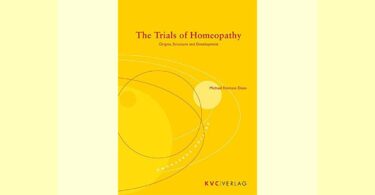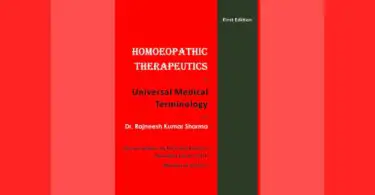‘Something in the Water’ – reviewed by Martin J. Walker
Author : Sue Lanzon
Paperback: 208 pages
Publisher: Winter Press (1 Oct 2012)
ISBN-10: 1874581800
ISBN-13: 978-1874581802
Product Dimensions: 21.5 x 13.5 x 1.3 cm
Editor’s note: This book review is excerpted from Martin J. Walker’s foreword to the book.
Something in the Water is a book about homeopathy, its practice and its remedies. It is, however, not an ordinary book but a rare one, which echoes the story of its subject in both form and content. The broken narrative of incidental tales, recounted in the first person by a practicing homeopath — someone who thinks homeopathically — offers us an everyday understanding of the homeopath and of homeopathy. The education, we are offered, however, is not from a factual, pragmatic or linear viewpoint, but immerses the reader in the very idea of its process. Imagine, if you can, being an English speaker opening a book about the Turkish language and finding part of the narrative itself written in understandable Turkish.
The book describes, in entertaining terms, the holism of homeopathy. This holism, not the mechanics of the practice or the effect of the remedies, is what sets homeopathy apart from ‘scientific’ or allopathic medicine. Homeopathy, as this book tells us, stretches like a live wire between the practitioner and her environment, the patient and her environment, the relationship between practitioner and patient and the onward journey in the life of both these parties. The idea behind Something In The Water is post-modern.
Each chapter of the book is a short story, mined from the homeopath’s life, in which a prominent character exhibits the need for a remedy or a situation recalls some aspect of homeopathic practice.
The first story, entitled The Liver, introduces the major themes of the book; we are, for the most part, in the inner city; homeopathy is rooted in the everyday; the author is writing from a political, undogmatic perspective; the homeopath’s private and professional lives continually merge with and mirror each other.
The other tales range across many aspects of human activity, identity and geography. Some drag you in without resistance while others force you to do your own deductive reasoning. Some seem to have more complex messages than others. For example, The Homeopath Is Not In, connects domestic problems with the terror of South American politics in the 1980’s, while describing the remedies, Stannum and Silica. In the title story, Something In The Water, ancient Greek mythology, family concerns, gender stereotypes, romance and the remedy Sepia, find a connection on an Aegean island. In all, there are 21 stories, including the wonderfully titled Shut Up And Talk.
The idea of postmodernism means that subjects can be addressed by referring to matters apparently unrelated to the narrative’s core phenomena. An earlier ‘modernist’ book about homeopathy would probably discuss: its history, its reputed mechanisms, and its use following diagnosis. The lengthiest part of the book may have been given over to a complex diagnostic analysis. The modern way of describing homeopathy or anything else was mainly linear and logical.
Of course, there is nothing wrong with this. However, homeopathy, despite its age, is, in its diagnostic method and treatment fundamentals, profoundly post-modern; that is to say it appears anything but linear and logical and is even, in part, unknown. A simple analogy could be found in a comparison between the modern fictitious Scotland Yard detective and Sherlock Holmes. The modern Scotland Yard detective is always separated from his community as a professional worker; he solves cases by moving under orders, pragmatically from one material clue to the next. If he finds no clues, the most fundamental question of whether or not a crime even exists will be raised. Sherlock Holmes, on the other hand, especially rendered by the late Jeremy Brett,1 the acknowledged master of the identity, acts as an independent, perverse and unaccountable ‘private’ detective, personally challenged by drug taking and depression, creating his own clues. Holmes solves cases by drawing upon intuitive wisdom, experience of life, emotional catharsis, acute observation of a variety of signs, observation of the demeanour of witnesses – contextualising environmental clues, long gathered tangential notes, news clippings and a febrile imagination, all of which dynamically link apparently unconnected phenomena and described cause and effect. While it might be suggested that the modern fictional detective is rational and scientific and Holmes irrational and entirely intuitive, in fact Holmes’s intellect, would have welcomed the detailed pictures provided by post-modern forensic science.
It is part of the platform of the present attack by corporatists on homeopathy that it would not be preferred as a treatment following a car crash. Of course, this is a straw man – even worse, a straw man of no stature that doesn’t even need knocking down. No homeopath would ever suggest that homeopathy could resurrect a badly damaged human body after a car accident. There are no chapters in Something in the Water that describe homeopathic treatments following car accidents. Each chapter reflects upon subtle conditions within almost normative social circumstances where homeopathy is, undoubtedly, useful and effective.
Such circumstances would of course include helping the body heal and recover more efficiently from a car accident, helping deal with shock or bereavement after an accident and toning down the fears of the badly injured patient. All of these later conditions the allopaths ignore as they trundle the broken human machine from corridor gurney to operating theatre, to bed and quickly back onto the street.
So who will profit most from this well-crafted and involving book? Homeopathic practitioners will, no doubt, read it with an eye to its technical correctness; some who don’t completely understand their own craft could well learn the lessons of the remedies cited. Above and beyond this, it is an ideal book for any reader new to homeopathy – for it explains this great method of healing and what might be expected from the simplest and most readable form. Consequently it could prompt many individuals to find their way to the therapy.
With homeopathy presently under concerted attack from lobby groups and corporate scientists, it needs defenders, proselytizers and prophets. Like other professionals who have become embattled in the war for science and new technology, some leading homeopaths think that their salvation lies in an exacting scientific explanation of their craft. I personally don’t believe that this is a path to be taken with any urgency or at the exclusion of other more popular routes. In time the science of homeopathy will be discovered. In fact this process has already begun.2
Exacting explanations by science won’t right the slant of the playing field or lead to its levelling, nor will it remedy the worldly ignorance of skeptics and corporate scientists. Real change will only occur when the hearts and minds, the lives of individuals and communities, are changed by discussions about the advantages of homeopathy over pharmaceutical medicine and a more positive education and understanding of homeopathy in the community. Sue Lanzon’s book is one of the first to embark upon this promotion and the first to do this using a common, popular language of the people.
Martin J. Walker





DEAR DR,
HOMEOPATHY IS NO LONGER A HOBBY. STUDENTS DEVOTE 5 1/2 YEARS IN ITS STUDY. HE PRACTICES IT FOR EARNING HIS LIVELIHOOD. HE WANTS TO READ ONLY THOSE BOOKS WHICH HELP HIM IN HIS PRACTICE. AS A MATTER OF FACT THE HOMEOPATHS WANT BOOKS WHICH MAY REMOVE CONFUSION IN TWO SIMILAR REMEDIES SO THAT HE COULD BE QUICK IN SELECTING A CORRECT REMEDY. SO FAR THERE ARE BOOKS AFTER BOOKS ON HOMEOPATHY BASED ON SOME BOOKS WRITTEN BY MASTERS. WE WANT BOOKS BASED ON THE PRACTICAL EXPERIENCE OF DRS IN THEIR PRACTICE.
THANKS
DR SHEKHAR
THANKS
DR SHEKHAR